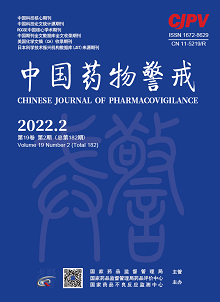|
|
Mechanism of nephrotoxicity of 5-hydroxymethylfurfural based on mass spectrometry imaging
JIANG Haiyan, GAO Shanshan, LI Jie, LIU Zhigang, HAO Ruirui, PANG Fei, HU Yuchi, HE Jiuming, JIN Hongtao
2022, 19(2):
142-147.
DOI: 10.19803/j.1672-8629.2022.02.07
Objective To explore the spatial and temporal metabolic profiles of kidney after 5-hydroxymethylfurfural (5-HMF) administration and elucidate possible mechanisms of the nephrotoxicity from the omics level. Methods ICR mice were divided into control group and administration group, which were intravenously injected with saline and 5-HMF (300 mg·kg-1), respectively. Kidney tissues were collected at 1, 4 and 24 hours time points, and then the frozen renal tissue sections were scanned and visualized by air flow-assisted desorption electrospray ionization mass spectrometry imaging (AFADESI-MSI). Microregional metabolic information was extracted, and then the differential metabolites at each time point were screened out for identification and pathway enrichment analysis. Results The main difference metabolites between the administration group and the control group were phenylalanine, adenosine, adenine, hypoxanthine, guanosine monophosphate, FA-22∶6 and others. The important metabolic pathways are purine metabolism, alanine aspartate and glutamate metabolism, arginine biosynthesis, TCA cycle and pyrimidine metabolism. Meanwhile, long chain fatty acids and phospholipids were up-regulated, suggesting that the toxicity mechanism of 5-HMF may also be related to the disruption of fatty acid oxidation and lipid metabolism. By comparing the different metabolites at each time point, hypoxanthine, FA-22∶ 6 and LPG-22∶ 6 could be used as potential toxicity prediction biomarkers, and the best detection time was 4 h after administration. Conclusion This method can realize the spatiotemporal analysis of kidney metabolism caused by 5-HMF, reveal the possible nephrotoxicity mechanism of 5-HMF, and demonstrate the advantages of mass spectrometry imaging technology in drug toxicology studies.
References |
Related Articles |
Metrics
|

